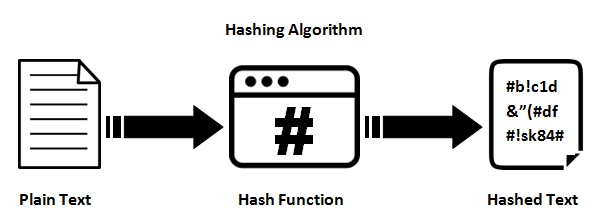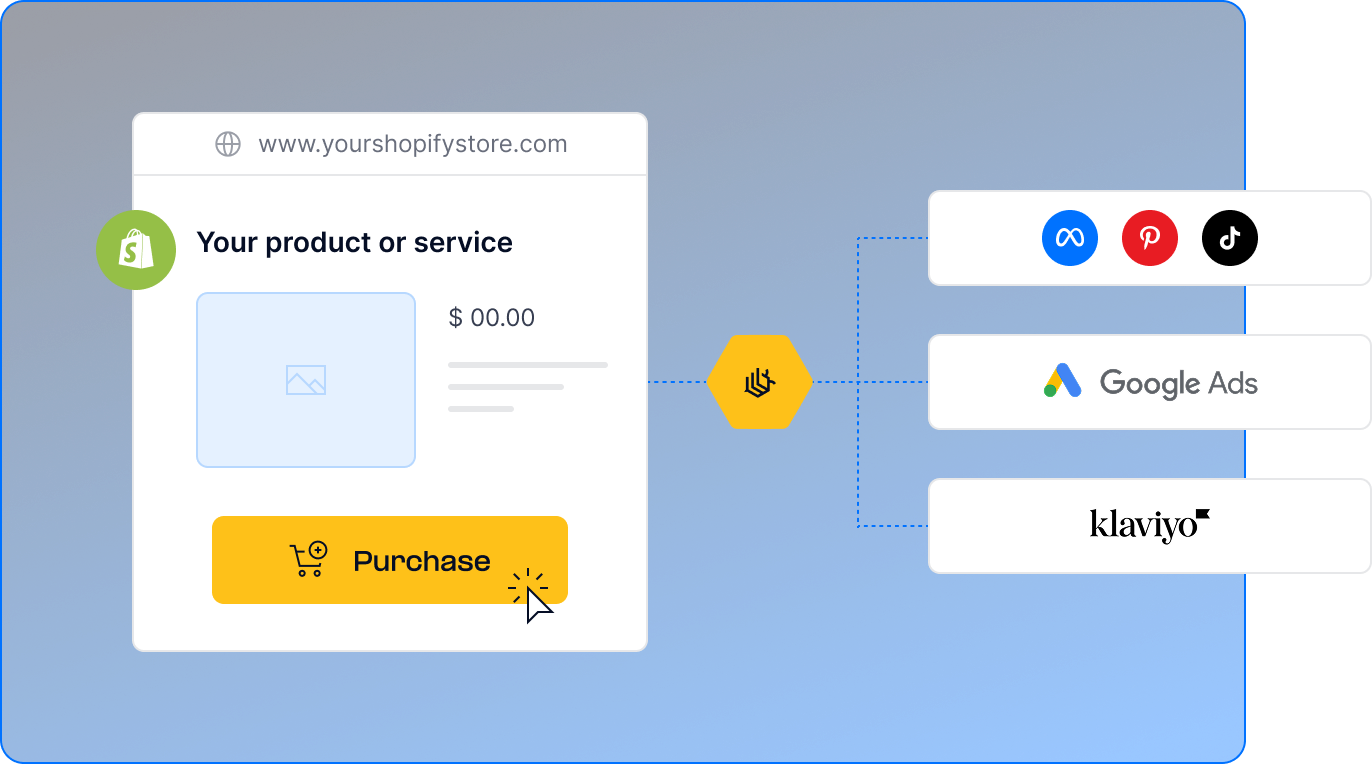That’s exactly why Google developed Enhanced Conversions – a powerful feature designed to help advertisers maintain accurate measurement in this privacy-first world. But while this Google solution offers significant improvements, there’s still room for more – especially if you’re running a Shopify store and want to maximize your advertising ROI.

What are Google Enhanced Conversions?
Google Enhanced Conversions is a feature within Google Ads that dramatically improves how accurately you can measure conversions by using hashed customer data. Instead of relying just on cookies, Enhanced Conversions works by securely hashing information like email addresses, phone numbers, or postal addresses, and matching them with logged-in Google accounts.
This creates a much more reliable connection between your ads and conversions, even when traditional tracking methods fail because of browser restrictions, device-switching, or cookie consent issues. The beauty of this approach is that it respects user privacy while solving a crucial measurement problem for advertisers.
Why are Enhanced Conversions important?
The timing of Enhanced Conversions couldn’t be better. Here’s why they matter:
- Better measurement: Enhanced Conversions recover conversions that would otherwise disappear into the void, giving you a clearer picture of what’s actually working.
- Smarter optimization: With more accurate conversion data, Google’s automated bidding can make better decisions, boosting performance and ROI. This is especially crucial for Smart Bidding strategies that rely on quality conversion data.
- Future-proofing: As cookies continue to vanish and privacy rules tighten, Enhanced Conversions provide a sustainable tracking method that respects user privacy.
- Cross-device insights: Enhanced Conversions connect user actions across phones, tablets, and computers, revealing the full customer journey. They can bridge gaps when users research on mobile but purchase on desktop.

How do Enhanced Conversions work?
The process behind Enhanced Conversions is sophisticated yet privacy-focused:
- When someone converts on your site (purchases something or submits a form), certain customer data elements related to conversion events are collected.
- This data gets hashed using SHA256 encryption, transforming it into an unreadable string of characters – ensuring no personal information is shared in its original form.
- The hashed data is securely sent to Google.
- Google matches this hashed data with its database of logged-in users, allowing it to accurately attribute conversions to the right ad interactions – even across different devices or browsers.
- All this happens without compromising privacy or sharing raw personal data.
The difference between Enhanced Conversions for Web and Enhanced Conversions for Leads
When implementing Enhanced Conversions, it's important to understand that Google offers two distinct types tailored to different business models:

Enhanced Conversions for Web
This is what we’ve primarily discussed so far, designed for businesses where the conversion happens directly on your website. When a user completes a purchase or fills out a form on your site, the conversion data (email, name, home address, etc.) is collected, hashed, and sent to Google. This works perfectly for e-commerce stores, SaaS companies, and any business where the customer journey completes online.

Enhanced Conversions for Leads
If your business model involves generating leads that convert offline (like car dealerships, real estate agencies, or B2B services), Enhanced Conversions for Leads is your solution. This feature helps track conversions that start online but finish offline by:
- Capturing lead information when a prospect submits a form or calls your business
- Allowing you to upload conversion data later when that lead actually converts offline
- Matching the original ad click to the final conversion, even if it happened days or weeks later
This is particularly valuable for businesses with longer sales cycles or where the final transaction happens outside the digital space. For instance, if someone clicks an ad for your car dealership, fills out a contact form, and later purchases a vehicle in person, Enhanced Conversions for Leads can connect those dots.
The key distinction: Enhanced Conversions for Web tracks conversions that happen immediately on your site, while Enhanced Conversions for Leads bridges the gap between online interest and offline conversions.
Important note: When setting up Enhanced Conversions in Google Ads, be careful not to confuse these two types. For Shopify store owners, Enhanced Conversions for Web is typically what you'll need, as your conversions happen directly on your website.

Using Enhanced Conversions for Shopify stores
Getting started with Enhanced Conversions is straightforward, especially for Shopify e-commerce businesses.
For Shopify stores, the best way to implement Enhanced Conversions is through a specialized app. TrackBee is the recommended solution here. The TrackBee Conversion Booster is specifically designed to enhance Google Ads conversion tracking by sending richer, more complete first-party data to Google, which results in improved match rates and smarter campaign optimization.
Learn how to use the TrackBee Conversion Booster

Implementing Enhanced Conversions without Shopify
Not using TrackBee? Then follow the steps written down by Google, or the steps down below.
Step 1: Enable Enhanced Conversions in Google Ads
Log in to your Google Ads account, click the Goals icon (top right), then go to Conversions > Settings.
Scroll to the Enhanced Conversions for web section and check "Turn on enhanced conversions for web".
Review and accept the compliance statement confirming your use complies with Google's policies and Data Processing Terms.
Then, select your tagging method: Google Tag Manager, Google Tag (gtag.js), or the Google Ads API.
Important: Only data sent via the selected method will be processed. Choose the one that matches your setup.
Step 2: Add Enhanced Conversion tracking to your website
There are two main ways to implement Enhanced Conversions on your site:
- Via Google Tag Manager (GTM):
Update your existing conversion tag in GTM to include customer data variables such as email or phone number. GTM will automatically hash these values before sending them to Google at the time of conversion. - Via Global Site Tag (gtag.js) or the Google Ads API:
Modify your existing gtag.js snippet to include user data (e.g., email). Google handles the hashing internally. The API option is better suited for advanced or server-side implementations.
Step 3: Test your setup
Once implemented, use the Diagnostics tab in your Google Ads conversion settings to verify that data is being received correctly.
If configured properly, you should start seeing Enhanced Conversions show up in your reports within a few days.
Enhanced Conversions vs. traditional conversion tracking
Understanding these differences explains why Enhanced Conversions represent a major improvement.
Traditional conversion measurement relies heavily on cookies, which are becoming less effective due to browser restrictions. Enhanced Conversions, on the other hand, use first-party data to improve tracking accuracy and bridge gaps left by privacy concerns and untracked offline conversions.

The future of conversion tracking
Looking ahead, several trends are reshaping conversion tracking:
- First-party data dominance: Businesses effectively collecting and using their own customer data will have a clear advantage.
- Server-side tracking: More tracking will move server-side to bypass browser limitations. Browser updates, such as Safari's Intelligent Tracking Prevention (ITP) and Firefox's Enhanced Tracking Protection (ETP), complicate conversion measurement and data tracking, making server-side tracking essential. This approach can complement Enhanced Conversions by creating a more reliable data pipeline.
- Using Shopify? Make sure to use TrackBee to enhance conversions even more.
- Analytics integration: Deeper connections with tools like Google Analytics 4 will provide more comprehensive insights. Enhanced Conversions work seamlessly with GA4’s measurement model.
- Machine learning enhancements: Expect smarter modeling to fill data gaps where direct measurement isn’t possible. Google’s Consent Mode already uses modeling to estimate conversions when cookies aren’t available.
For Shopify entrepreneurs especially, mastering these evolving tracking technologies is crucial for maintaining competitive advertising as traditional methods continue to decline.

Why Trackbee takes Enhanced Conversions to the next level
While Google Enhanced Conversions significantly improve tracking accuracy, Shopify store owners face specific challenges that standard implementation doesn’t fully solve. This is where Trackbee’s Conversion Booster steps in.
Trackbee builds upon Google Enhanced Conversions by capturing conversion data that would otherwise slip through the cracks, leading to increased conversion rates. It finds and collects missing conversion information that standard Enhanced Conversions might miss, ensuring every valuable customer action gets properly attributed to your ads.
For Shopify entrepreneurs, this means:
- More complete data: TrackBee recovers additional conversions beyond what Enhanced Conversions alone can capture, giving you the clearest picture of what’s working.
- Seamless Shopify integration: While setting up Enhanced Conversions can be technically challenging, Trackbee’s specialized Shopify integration makes implementation straightforward through its custom pixel solution.
- Improved ROAS: With more comprehensive conversion data flowing to Google Ads, your automated bidding strategies become significantly more effective, boosting return on ad spend.
- No technical expertise needed: TrackBee handles all the complex technical aspects, letting you focus on growing your business rather than troubleshooting tracking issues.
- Dedicated support: With a comprehensive help center and setup guides, Trackbee ensures your conversion tracking works optimally without the headaches.
Read more about how TrackBee works

Real results: The Honeybalm success story
The power of enhanced tracking is perfectly illustrated by Honeybalm's experience with TrackBee. After struggling with incomplete tracking and high costs with their previous solution, Honeybalm switched to TrackBee and saw remarkable results:
- ROAS increased by 100%: Their return on ad spend doubled after implementing Trackbee's more accurate tracking.
- Revenue grew by 123%: Within just three months, their revenue jumped from €95,000 to €212,000.
- CPM decreased by 60%: By sending better data back to advertising platforms, their cost per thousand impressions dropped from €10 to €4.
"We are so satisfied with TrackBee that we are also going to use it for our new brand. We truly see the value of TrackBee, especially its real-time connection to the advertising platforms, which makes it extremely accurate and fast," reports Honeybalm.

Think of TrackBee as the hardworking bee that collects rich first-party data nectar for your Enhanced Conversions, making your conversion measurements even sweeter and your marketing results more impressive.
Conclusion
Google Enhanced Conversions marks a major step forward for conversion tracking in our privacy-focused digital world. By using hashed first-party data to connect ad interactions with conversions, this technology helps advertisers make smarter decisions despite the decline of third-party cookies.
But for Shopify store owners looking to maximize advertising effectiveness, TrackBee's Conversion Booster takes things even further. By capturing conversion data that would otherwise be missed and seamlessly integrating with both Shopify and Google Ads through its custom pixel, Trackbee ensures you're making decisions based on the most complete data possible.
In a world where every conversion counts and advertising budgets need to work harder than ever, combining Enhanced Conversions with TrackBee gives Shopify entrepreneurs the edge needed to thrive in competitive markets. The simple setup process through TrackBee's platform means you can start benefiting quickly, without needing technical expertise.
Remember: When it comes to conversion tracking, having good data is essential – but having complete data is what truly drives exceptional results. And for Shopify stores, TrackBee is the key to ensuring that completeness.


.png)





.png)

.png)

.png)
.png)

.png)
.png)

.png)



.png)



